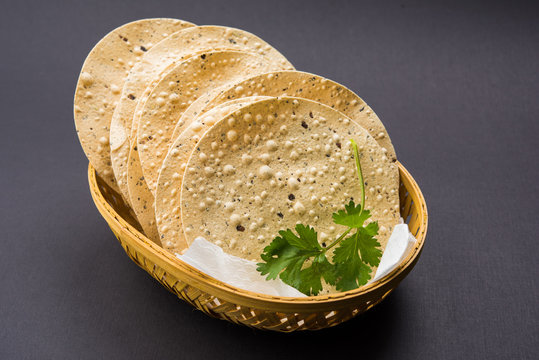Project Report For Namkeen or Papad
Introduction
Project report for namkeen or papad is as follows.
The name “namkeen” refers broadly to the salty snacks that are traditionally eaten in South Asian countries. These snacks can be made from a variety of ingredients, including whole legumes like green peas, chickpeas, peanuts, cashews, moong dal, lentils, and dough-based extruded goods.
The Namkeen or Papad making business is extremely profitable in the food market given the low startup expenses. In India, papad is a popular appetizer that is commonly served. It appears to be a skinny wafer. Local preferences affect the variety and proportion of pulses and spices, and some varieties are consumed more frequently than others.

Product & Application of Namkeen or Papad
Indians love papad, which they eat as a snack and as a way to enhance the flavour of the main entrée. It is healthy and simple to digest because it is made of pulses. It is a fairly simple process to make an immediate meal item that is either roasted before serving or fried in edible oil. It has a two and a half to three month shelf life. Anywhere in the nation is capable of producing this item. Papad can be made using a variety of components and techniques. The most popular recipe, arguably, calls for flour made from hulled split black grammes (urad dal).
A food-grade alkalai, black pepper, salt, a tiny amount of vegetable oil, and black gram flour are combined and combined. After being thoroughly kneaded, the dough is shaped into very thin rounds, dried, and kept for subsequent preparation and consumption. As key ingredients, papad can also include rice, jackfruit, sabudana, etc. As flavouring ingredients, people frequently use cracked black pepper, red chilli powder, asafoetida, cumin, or sesame seeds.
Project Report Sample On
Namkeen or Papad
Get Completely Custom Bankable Project Report
Raw Material For Namkeen or Papad
Depending on the product combination, flour or pulses would be all-important basic materials. Since the annual demand, even at 100%, won’t exceed 60 tonnes, availability won’t be a problem. Other ingredients like salt, spices, edible oil, preservatives, and other ingredients will only be needed in small amounts and be readily available locally. Local suppliers must also provide packing supplies including corrugated boxes and polythene bags in various sizes.
Market Potential of Namkeen or Papad
The Indian market for snack food, which is believed to be worth US$ 3 billion and the branded snack industry, which is anticipated to be worth US$ 1.34 billion and rising at a rate of 15% to 20% annually.
Expenses

Product Cost Breakup

Reveneue Vs Expenses

Market Trend

Indians frequently eat papad with their meals. Some people also drink tea while taking it. There are various sorts of papads, including those prepared from urad dal, potatoes, rice, etc. In addition to being consumed in homes, papad bariyan is also eaten in restaurants, Dhabas, and by people going on picnics and eating meals, among other places. Breakfast products including cornflakes, muesli, pancakes, oatmeal, and porridge are all included in the small Rs 2.5 billion market estimate for breakfast in India.
A big wave of growth is projected as the market is predicted to rise by up to 30% annually thanks to modern retail’s availability of new Indian and Western contemporary product recipes. The market for snack foods is thought to be worth between Rs. 45 and Rs. 50 billion total. According to reports, the market is expanding between 7 and 8% yearly. The traditional sector (bhujia, chanachur, and similar items), the Western segment (potato chips, cheese balls, etc.), and the recently created finger snacks segment make up the organised snacks category.
